Customized | Quality Control | Case | Blogs | Download | FAQ
Views: 0 Author: HUIHE Publish Time: 2025-09-24 Origin: HUIHE PACK
The spirits bottle finish—often the most overlooked detail in packaging design—is, in fact, one of the most critical decisions your distillery or brand will make. This small neck opening is the gateway to your product's success, directly impacting everything from your filling line efficiency and sealing reliability to your spirit's shelf life and the final consumer's experience. A great finish boosts your brand; a poor one can lead to costly line downtime and product leaks. With 10 core bottle finishes available, how do you choose the right one?
This comprehensive guide is written specifically for distillery purchasing managers, operations heads, and liquor brand designers who need to make informed B2B decisions. We break down the technical specifications of the most common spirits bottle finish types, including Bar Tops (cork finish) and Screw Threads (ROPP). By the end, you will know how to match your spirit's character, production speed, and brand image with the perfect glass bottle closure, ensuring a secure and visually appealing product for the global market.
Table of Contents:
|  |
Choosing the right glass bottle finish for your spirit is a critical technical and aesthetic decision. While many finishes look similar, each is designed for specific bottling lines, closure types, and brand needs. Here's a look at the 10 core spirits bottle finish types available, from classic cork to modern screw thread options, that you should consider for your product.
The 10 Spirits Bottle Finish Types
A classic and widely used finish in the spirits industry. This design is built for T-shape corks or bar tops, creating a clean, secure seal. It's a versatile choice for a broad range of spirits.
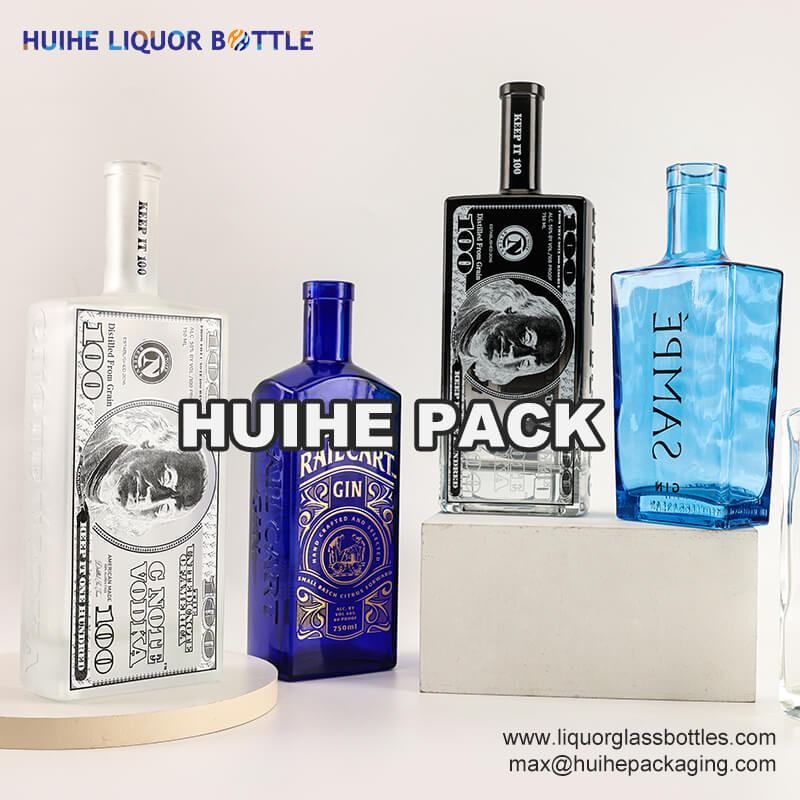
This finish offers a unique, handcrafted feel, deliberately echoing the slight imperfections of vintage, mouth-blown glass bottles. It's perfect for brands looking to convey a sense of heritage and artisanal quality.
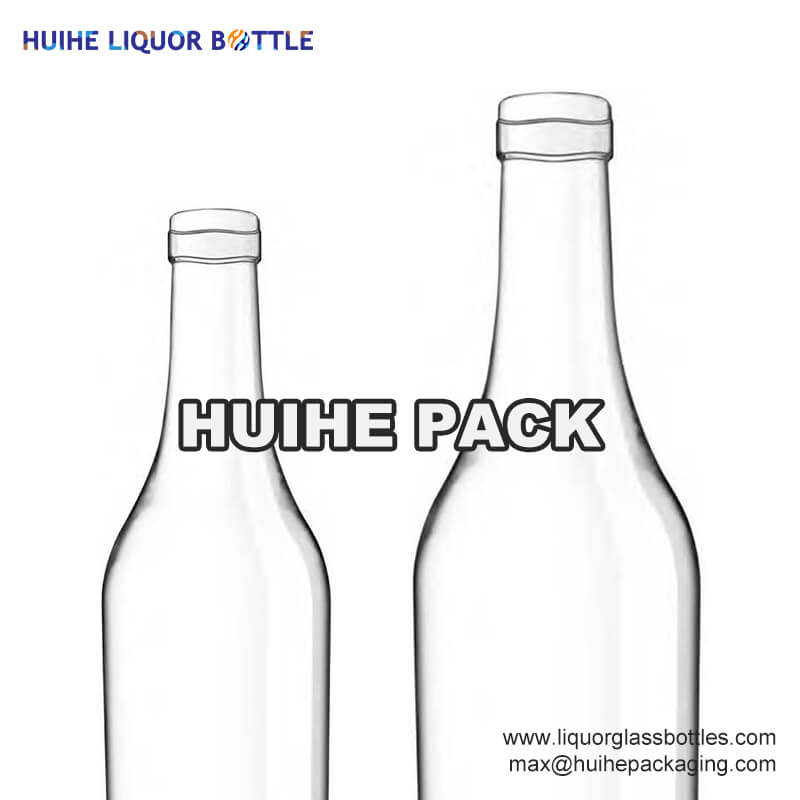
An iconic finish recognized by a small notch on its ring. Originally used for securing a string or cord, this finish adds an element of historical authenticity and is often seen on traditional cognac or brandy bottles.
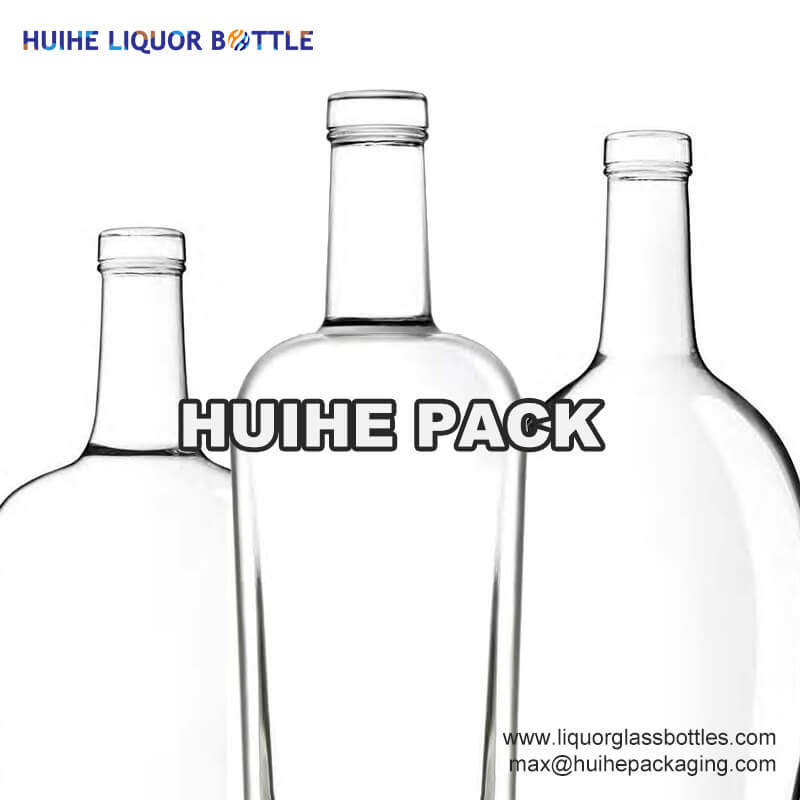
Designed for a premium, high-end look. This finish allows for a taller, more elegant profile on the bottle neck, making it ideal for luxury spirits and special edition decanters that require a distinct and commanding shelf presence.
A sleek, elongated version of the Plate finish. Its extra height (often around 22mm) provides an elegant, stretched appearance that helps a bottle stand out and offers a refined look without sacrificing a secure cork seal.
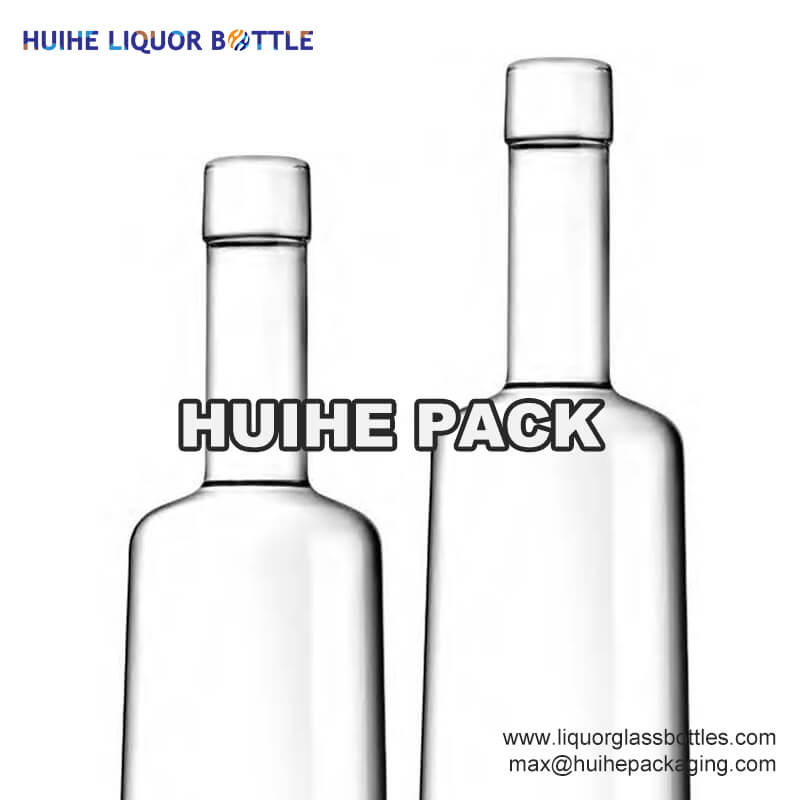
A versatile finish used across both the spirits and wine industries. Its specific profile is engineered for smooth bottling line performance and a reliable seal, making it a reliable and flexible option for many different product types.
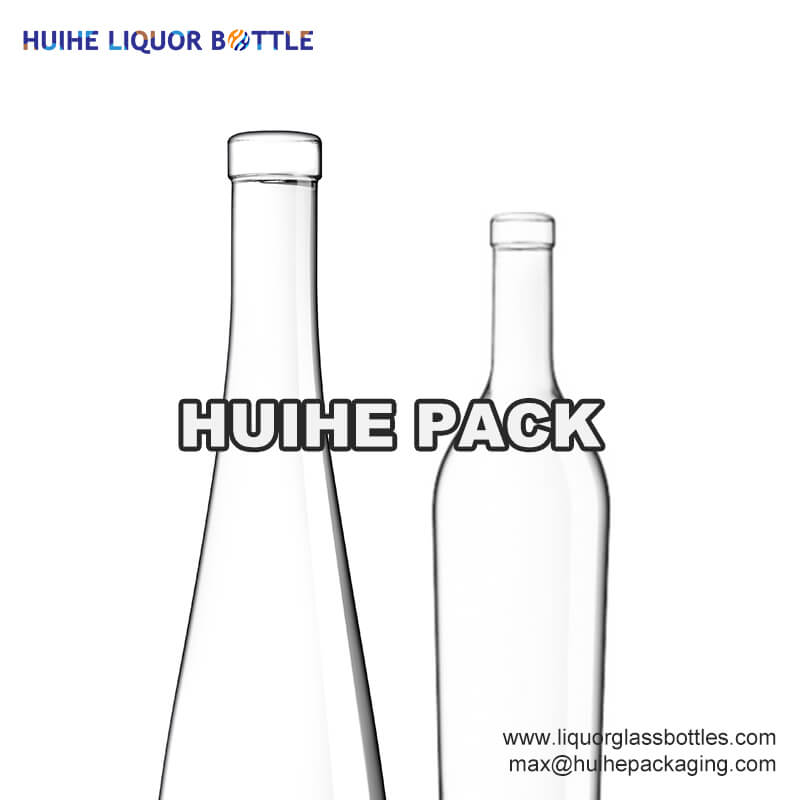
This is a convenient and dependable continuous thread screw finish. It's engineered for quick, secure closure and can be found in various sizes (e.g., 400/28, 400/33), making it a popular choice for everything from premium whiskey to common vodka bottles.
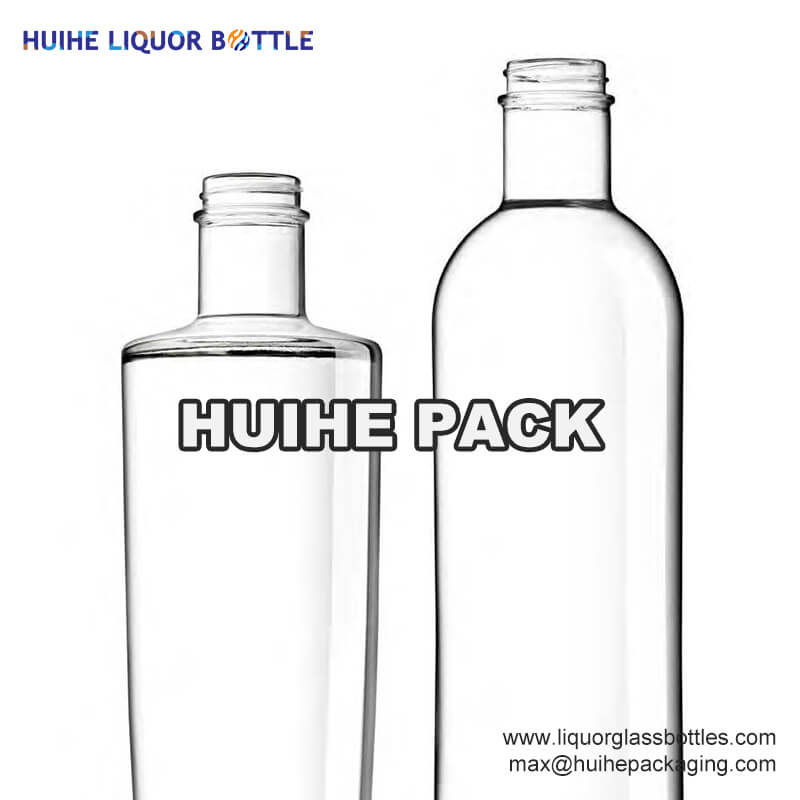
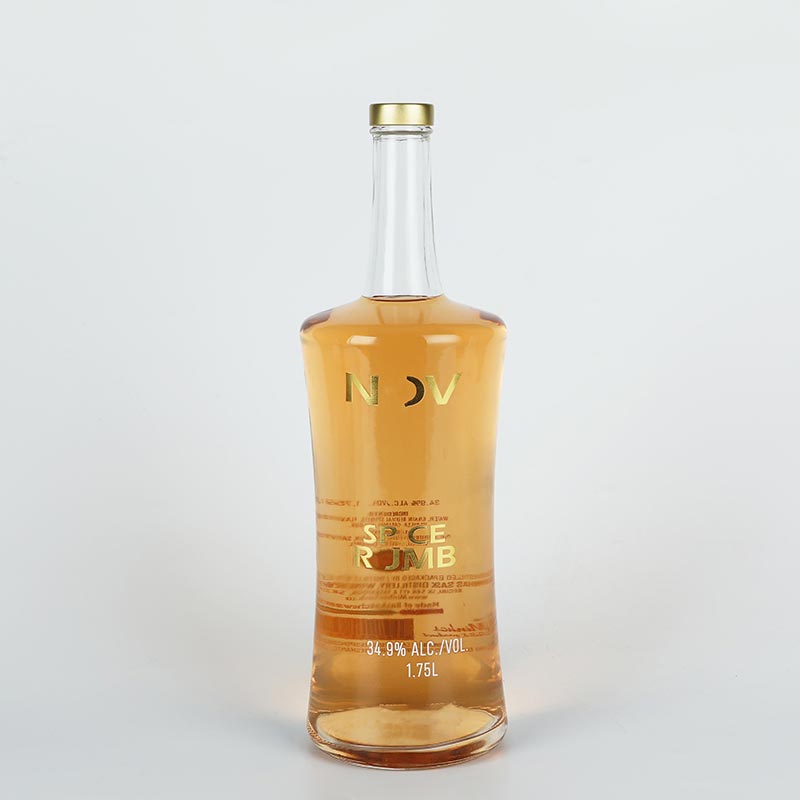
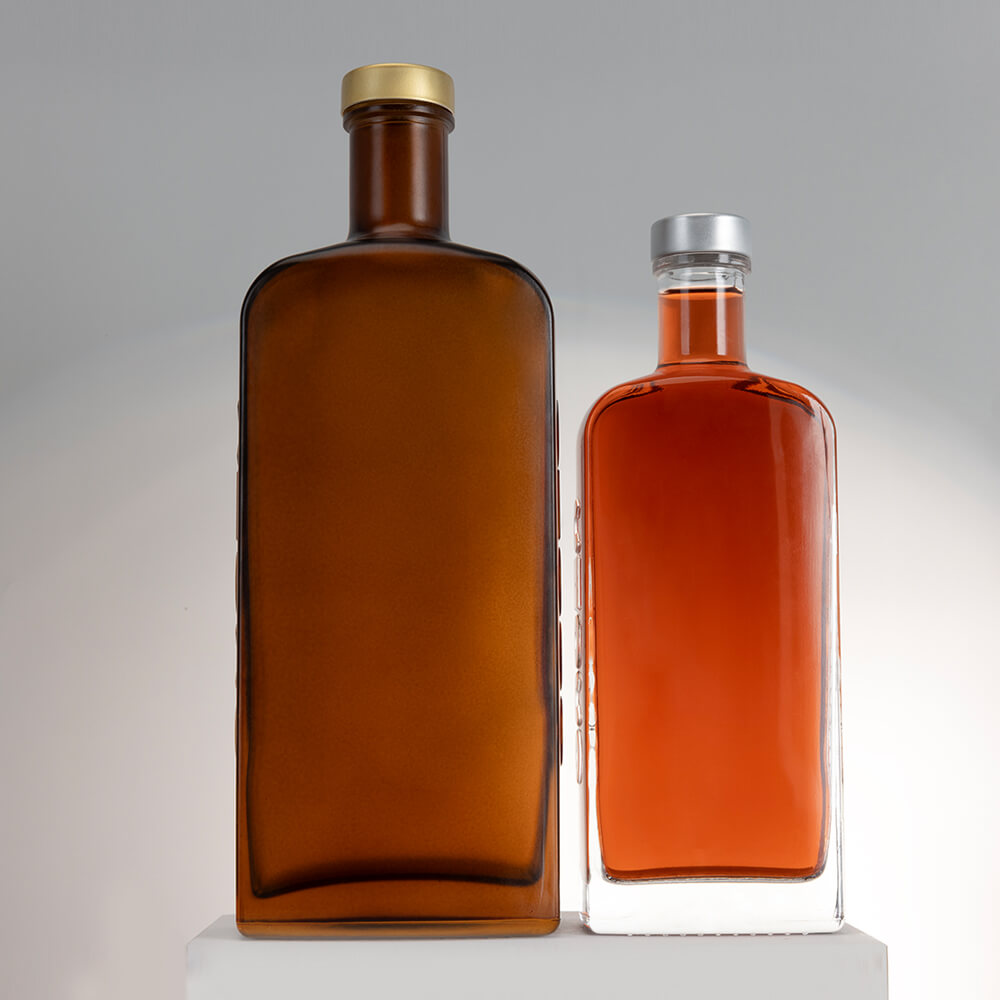
A modern, highly technical screw closure known for its secure seal. This finish is a top choice for a wide variety of bottle formats, and it’s especially valued for its re-sealable function, ensuring product freshness after opening.
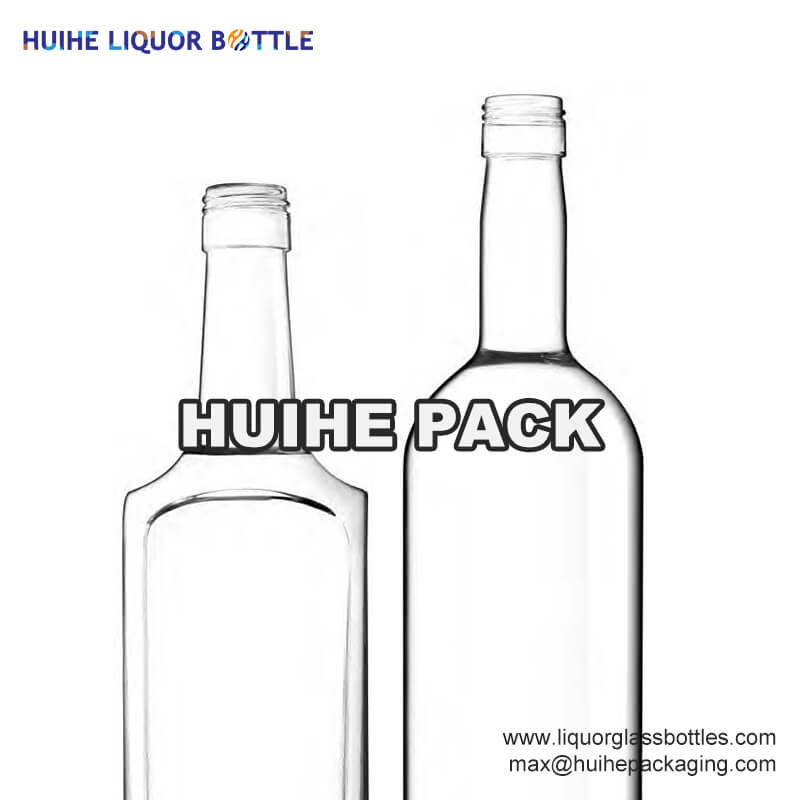
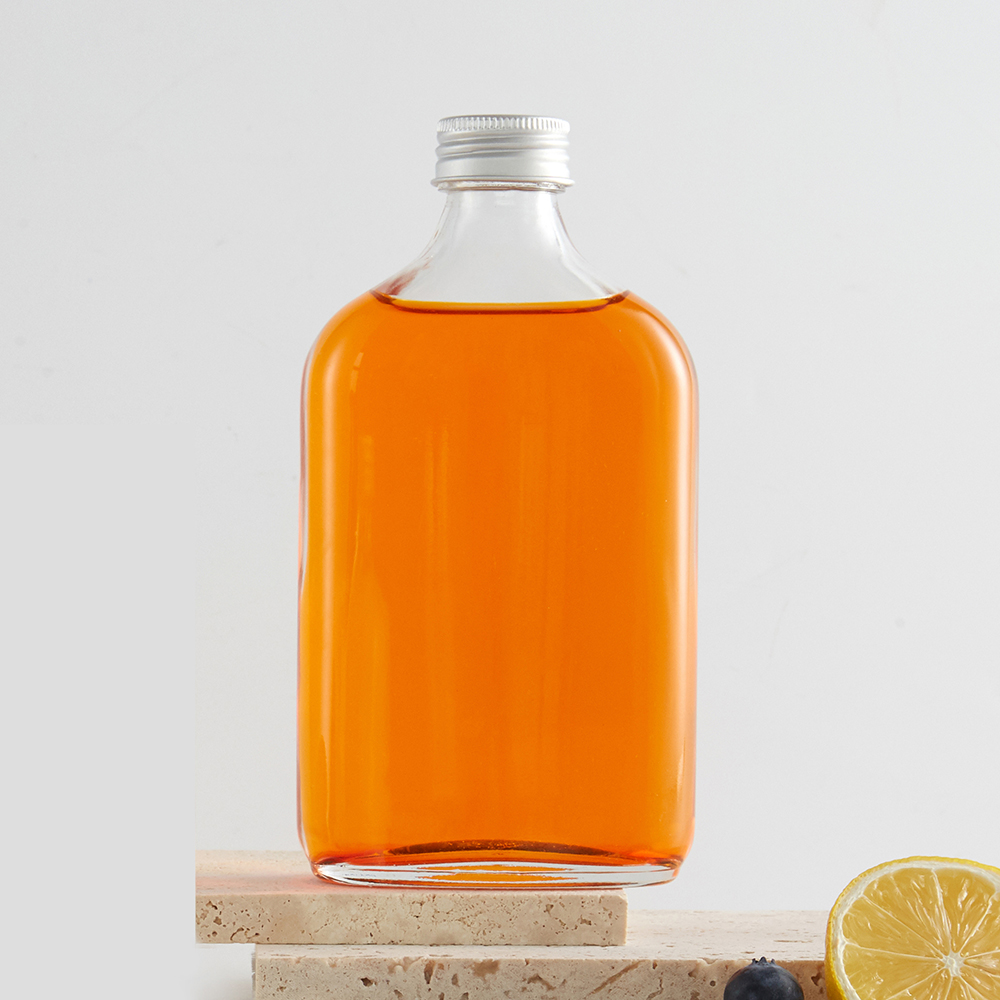
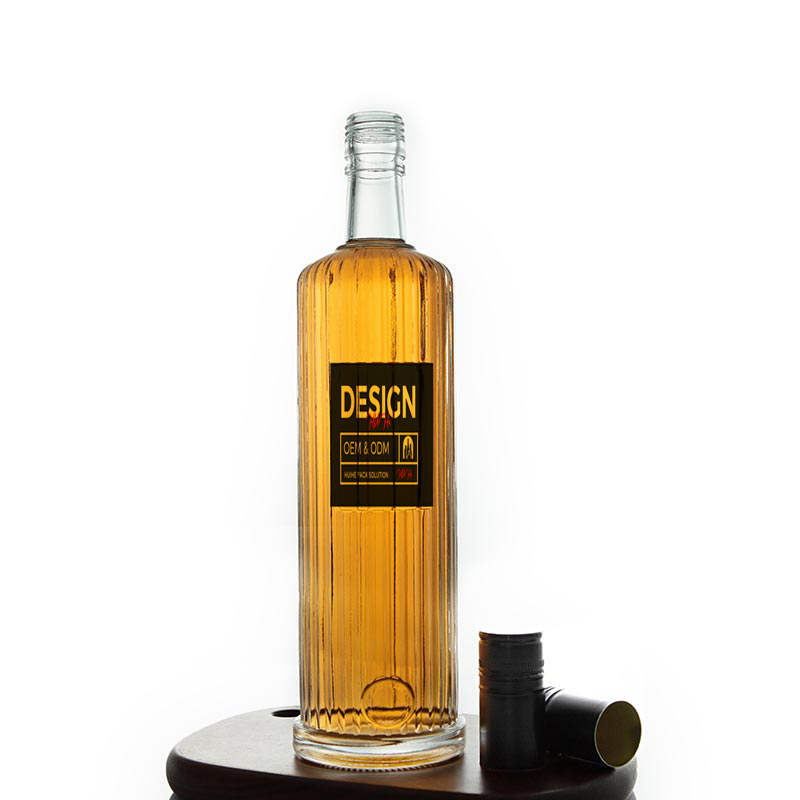
While commonly used for carbonated drinks, this technical finish is also an option for certain spirits, like ready-to-drink (RTD) cocktails or sparkling spirits. It provides a strong, reliable seal suitable for products under pressure.
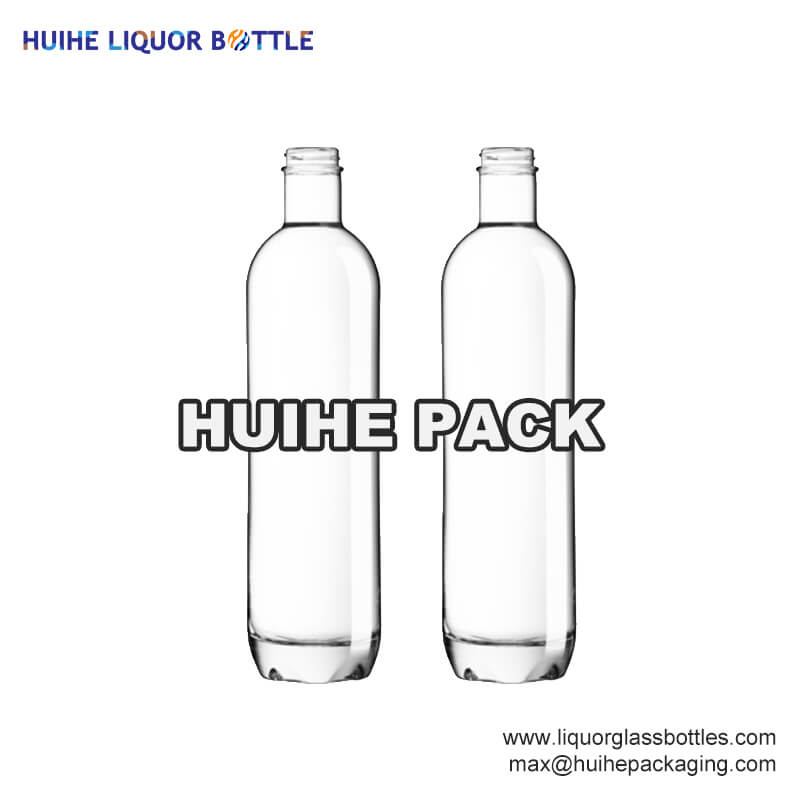
This unique finish allows for a screw overcap, which provides a distinct, perfume-like aesthetic. It's an excellent choice for brands aiming for an elegant and unconventional look that stands apart from typical spirits bottles.
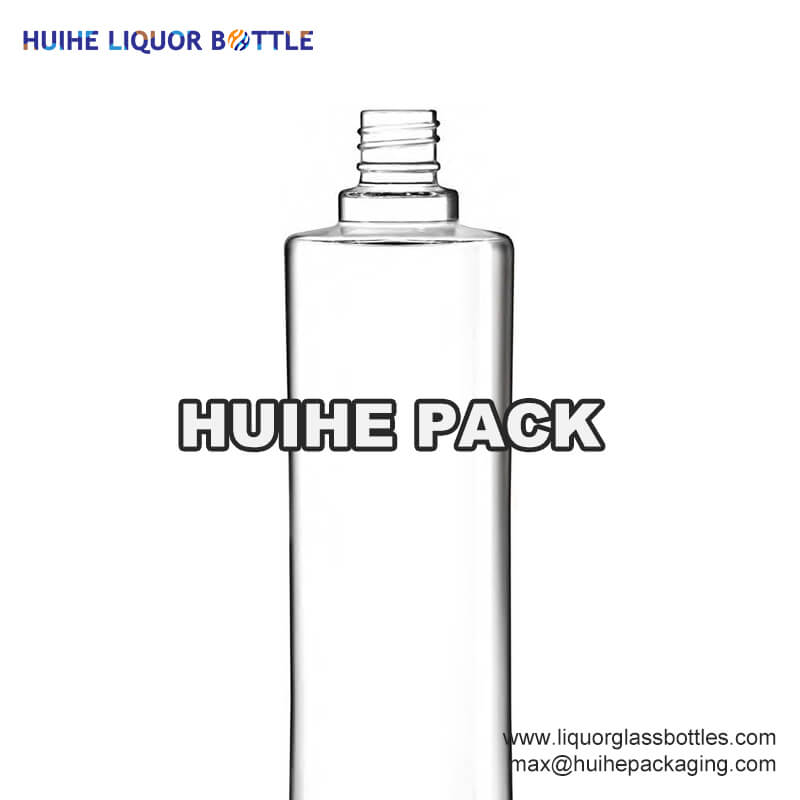
Choosing from the 10 spirits bottle finish types is a balancing act between technical requirements, operational efficiency, and your brand's market positioning. Distilleries and brands must weigh these core factors to secure the most effective and appealing glass bottle closure.
The design of the bottle finish has a direct, major impact on your production line.
Screw Thread Finishes (GPI/BVP): These are the workhorses of high-speed automation. Finishes like the GPI Screw Finish and BVP Screw Finish are designed to work seamlessly with fast, automated capping machines, leading to the lowest cost per unit in high-volume production.
Plate/Cork Finishes: Traditional Plate Finishes (including the Extra-High Plate and Distorted Plate) require specialized corking or bar top insertion equipment. While visually premium, their bottling speeds are typically slower than continuous thread options. Choosing the wrong finish can lead to significant filling line downtime and increased operational costs.
The primary technical function of any finish is to ensure a reliable seal, which is critical for product quality and preventing evaporation, especially with high-proof spirits.
Cork Seals: Finishes like the standard Plate Finish rely on the quality of the T-top cork (or bar top). This method is often preferred for premium spirits like whiskey or cognac, but it requires precise bottle neck geometry to minimize the risk of leakage during transportation.
ROPP/Screw Seals: The BVP and GPI Screw Finishes offer highly reliable, air-tight seals. This consistent, technical seal is often preferred for spirits like vodka or gin where long-term, non-volatile sealing is essential.
Your choice of spirits bottle finish is a powerful visual cue that communicates your brand's value.
Luxury & Tradition: Bar Top or Cork Finishes (like the Carnette or Plate Bouchon à Tête) are synonymous with premium spirits, craftsmanship, and a traditional opening ritual. This choice instantly elevates a brand's perception.
Modern & Convenience: Screw Thread Finishes signal convenience and modernity. Their re-sealable nature provides high utility for the end consumer. Even technical finishes like the Europa Finish (with its unique overcap) can be used to create a strong, unconventional brand statement.
Protecting your product from tampering is non-negotiable for distilleries and liquor brands.
Tamper-Evident Features: Screw thread finishes often integrate a clear security band or ring that breaks upon first opening.
Custom Seals: For cork finishes, brands often add a wax seal, foil capsule, or use unique features, such as the small notch on the Plate Bouchon à Tête finish, which was historically used for securing a string, providing an element of bespoke security and authenticity.
The final step in selecting the right finish is aligning the technical specifications with your product's category, value, and desired market perception. Here is a breakdown of common pairings and why they work:
| Spirit Category | Recommended Finish Types | Rationale for Selection |
|---|---|---|
Luxury & Aged Spirits (Premium Whiskies, Cognacs, Aged Rums) | Plate Finish (including Carnette, Distorted Plate, and Extra-High Plate), utilizing Bar Top Closures (cork finish). | These categories demand a strong sense of tradition and craftsmanship. The Bar Top closure offers a distinct, high-end opening ritual and instantly signals a premium product. The aesthetic of the Carnette finish, for instance, enhances the bottle's perceived value and shelf appeal. |
Standard Volume Spirits (Vodka, Gin, Tequila, Liqueurs) | GPI Screw Finish, BVP Screw Finish, or the Plate FA Finish. | The focus here is on efficiency and sealing reliability. Screw Thread Finishes allow for high-speed, automated filling line operation, which lowers the cost per unit. They also provide a convenient, re-sealable solution for consumers. |
Unique/Specialty Spirits (Mixology Lines, Experimental Liqueurs) | Europa Finish (with screw overcap), MCA2 Finish, or Plate Bouchon à Tête. | These brands seek differentiation. The unique Europa Finish, borrowed from the perfume world, creates an unconventional, high-impact aesthetic. The Plate Bouchon à Tête adds historic charm. The key is to ensure the glass bottle closure is in full harmony with the overall bottle design and label. |
Tips:
Regardless of the spirit type, always reference GCMI bottle finish standards when placing a custom order to ensure technical compatibility between the glass neck and your chosen cap material. This is crucial for avoiding costly errors during bottling.

Selecting the right spirits bottle finish is not merely a design choice; it is a critical investment that balances three core pillars: technical sealing integrity, filling line operational efficiency, and powerful brand identity. From the traditional elegance of the Bar Top finish to the high-speed utility of the GPI Screw Finish, your decision directly impacts your product's security and market perception.
Ready to Secure the Ideal Spirits Bottle Finish?
As a manufacturer with 16 years of expertise focusing on spirits bottle production, we understand the demands of distilleries and liquor brands worldwide. We offer a full range of services to simplify your B2B sourcing:
We wholesale ready-stock liquor glass bottles with a clear price advantage. Having exported to 50+ countries, we guarantee smooth logistics.
We provide a one-stop packaging solution—from bottle to finish. To ensure quality, samples are free, and you can order proofing (sampling) before placing your main order.
Don't leave your bottle finish to chance. Contact our professional sales and engineering team today for expert consultation on finish design and customization.

The two most common spirits bottle finish types are the Bar Top/Cork Finish and the Screw Thread Finish (often referred to as ROPP or GPI). Bar Tops are typically used for premium spirits like whiskey or cognac, providing a traditional ritual and aesthetic. Screw Threads are chosen for high-speed filling lines and reliable sealing on standard volume spirits like vodka and gin. Your ideal choice depends on your production speed and brand positioning.
The decision between a cork finish (like the Plate Finish) and a screw cap (like the GPI Screw Finish) depends on your primary business goal:
Brand Image: Cork Finishes are favored by high-end and aged spirits brands because they convey luxury, tradition, and superior quality (Source: Industry studies show consumers perceive glass and cork as more premium).
Operational Efficiency: Screw Caps excel in filling line compatibility and speed, offering the lowest cost per unit and the most secure, tamper-evident seal for high-volume production. Always test your final glass bottle closure with the specific finish size (e.g., 18.5mm vs. 21.5mm cork finish) to ensure proper fit.
GCMI stands for the Glass Container Manufacturers Institute, which sets the industry-wide dimensional standards for glass bottle finishes (often specified by a 3-digit number like 400). It is important because it ensures that the bottle neck we manufacture is precisely compatible with the closure you purchase globally. Using GCMI standards is critical for B2B procurement, as it prevents issues with sealing integrity and costly bottlenecks on your filling line.
The bottle finish directly affects the spirit’s shelf life by controlling oxygen ingress and evaporation. Screw Thread Finishes (like ROPP/BVP) generally offer a more consistent, technical air-tight seal, making them excellent for preserving the spirit's flavor profile long-term. While corks also seal effectively, they rely on the closure material (natural vs. synthetic) and the precision of the Plate Finish neck bore to prevent the spirit from slowly "breathing" or evaporating, which is a key concern for high-proof or aged products.


